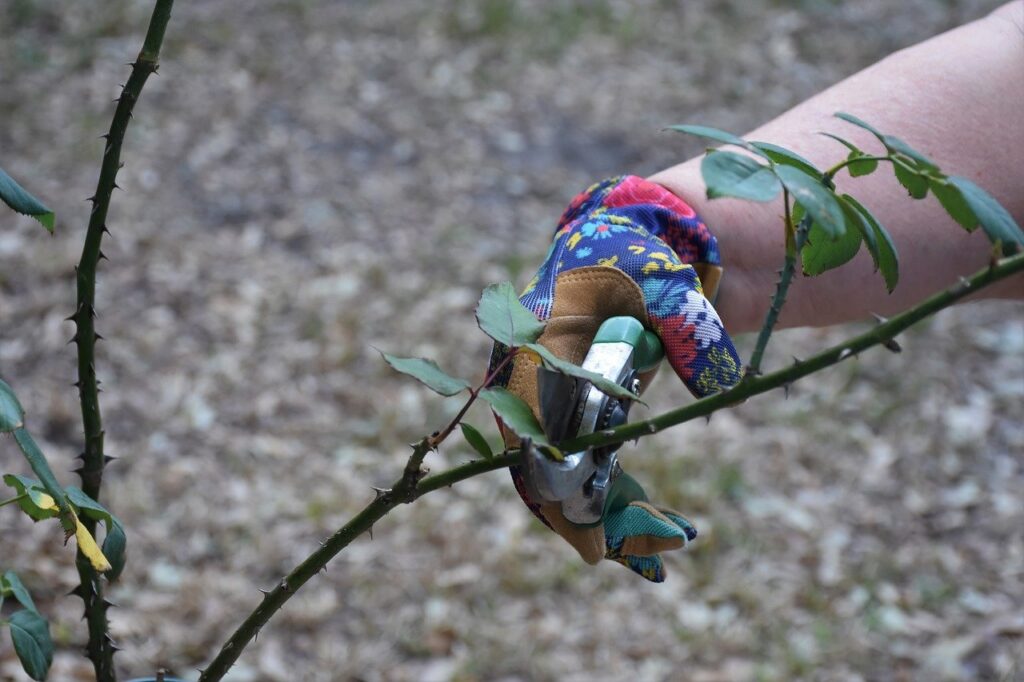Pruning rose bushes is an essential gardening task that promotes healthy growth, encourages blooming, and maintains the shape of the plant. Proper pruning helps prevent disease, removes dead or damaged wood, and allows for better air circulation. Here’s a step-by-step guide on how to prune your rose bushes effectively.

When to Prune Rose Bushes
The best time to prune rose bushes is in late winter or early spring, just as the buds begin to swell but before new growth starts. This timing helps the plant recover quickly and encourages robust flowering during the growing season.
Tools You Will Need
- Pruning Shears: Sharp and clean pruning shears are essential for making clean cuts.
- Loppers: For thicker branches that are difficult to cut with pruning shears.
- Gloves: Protect your hands from thorns and scratches.
- Disinfectant: To clean your tools between cuts to prevent the spread of disease.
Step-by-Step Pruning Guide
- Remove Dead and Damaged Wood: Start by cutting away any dead, damaged, or diseased branches. This helps prevent the spread of disease and pests. Cut back to healthy wood, just above an outward-facing bud.
- Open Up the Center: Prune out any crossing or inward-growing branches to improve air circulation and light penetration. This helps reduce the risk of fungal diseases. Aim to create an open, vase-like shape.
- Cut Back to Healthy Buds: Make cuts just above an outward-facing bud. This encourages the rose to grow outward, rather than into the center of the plant. Angle your cuts at about 45 degrees, sloping away from the bud to prevent water from collecting on the cut surface.
- Shape the Plant: Trim the remaining branches to shape the plant. For hybrid teas, floribundas, and grandifloras, cut back each cane by about one-third to one-half. For shrub roses, prune to maintain the desired size and shape.
- Remove Suckers: If you see any shoots growing from below the graft union (the swollen area near the base of the plant), remove them. These suckers can sap energy from the main plant.
Additional Tips
- Disinfect Your Tools: Clean your pruning tools with a disinfectant solution (such as a mix of bleach and water) between cuts to prevent the spread of disease.
- Mulch and Water: After pruning, apply a layer of mulch around the base of the plant and water thoroughly. This helps retain moisture and suppresses weeds.
Common Pruning Mistakes to Avoid
- Over-Pruning: Avoid cutting back more than one-third of the plant at a time, as this can stress the rose bush.
- Incorrect Timing: Pruning too early or too late can affect blooming and plant health. Stick to late winter or early spring.
- Leaving Stubs: Make clean cuts close to a bud or branch to prevent dieback and disease entry points.